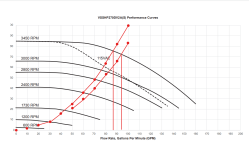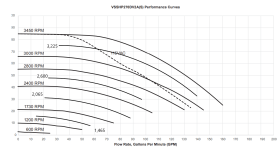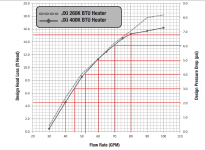- Jul 2, 2023
- 110
- Pool Size
- 14500
- Surface
- Plaster
- Chlorine
- Salt Water Generator
- SWG Type
- Jandy Aquapure 1400
Is there a way to estimate gallons per minute based on the RPMs of the pump? My plumbing is 2 1/2 inch plastic tubing, there are three returns in the pool that are 3/4 of an inch openings.
I am interested in this, because I have a manual bypass before the heater and the check valve after. I am trying to get a sense of where I should set my heater bypass so I don’t have to always be adjusting it.
I believe the maximum recommended flow to my heater is 100 gallons per minute. Could I run the priming speed slower, so it does not exceed 100 gallons per minute to the heater, and run the spa at less than 3450 RPM, so it’s also not to exceed maximum GPM the heater sees? Then I could leave the bypass to the heater totally closed at all times and not worry about the heater getting too much gallons per minute pressure when priming, or in spa mode.
Thanks so much
Jim.
I am interested in this, because I have a manual bypass before the heater and the check valve after. I am trying to get a sense of where I should set my heater bypass so I don’t have to always be adjusting it.
I believe the maximum recommended flow to my heater is 100 gallons per minute. Could I run the priming speed slower, so it does not exceed 100 gallons per minute to the heater, and run the spa at less than 3450 RPM, so it’s also not to exceed maximum GPM the heater sees? Then I could leave the bypass to the heater totally closed at all times and not worry about the heater getting too much gallons per minute pressure when priming, or in spa mode.
Thanks so much
Jim.






